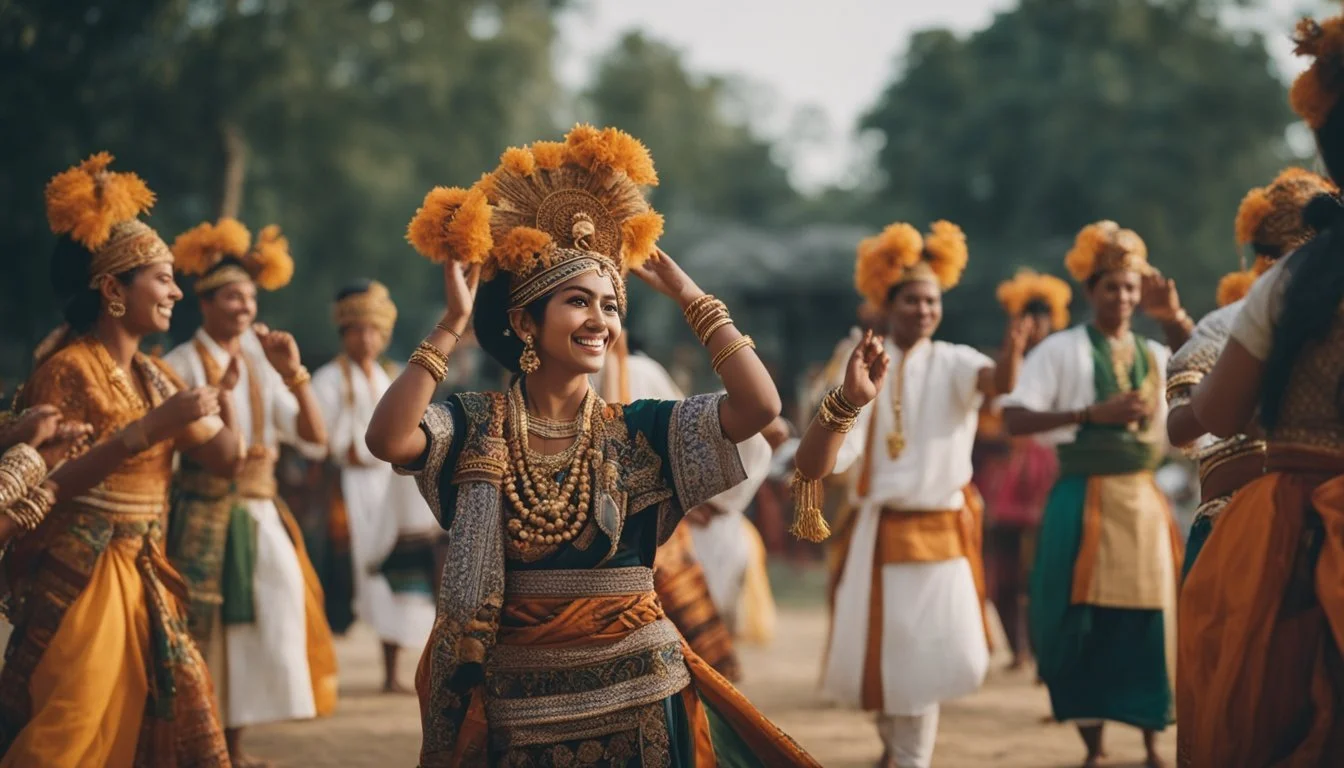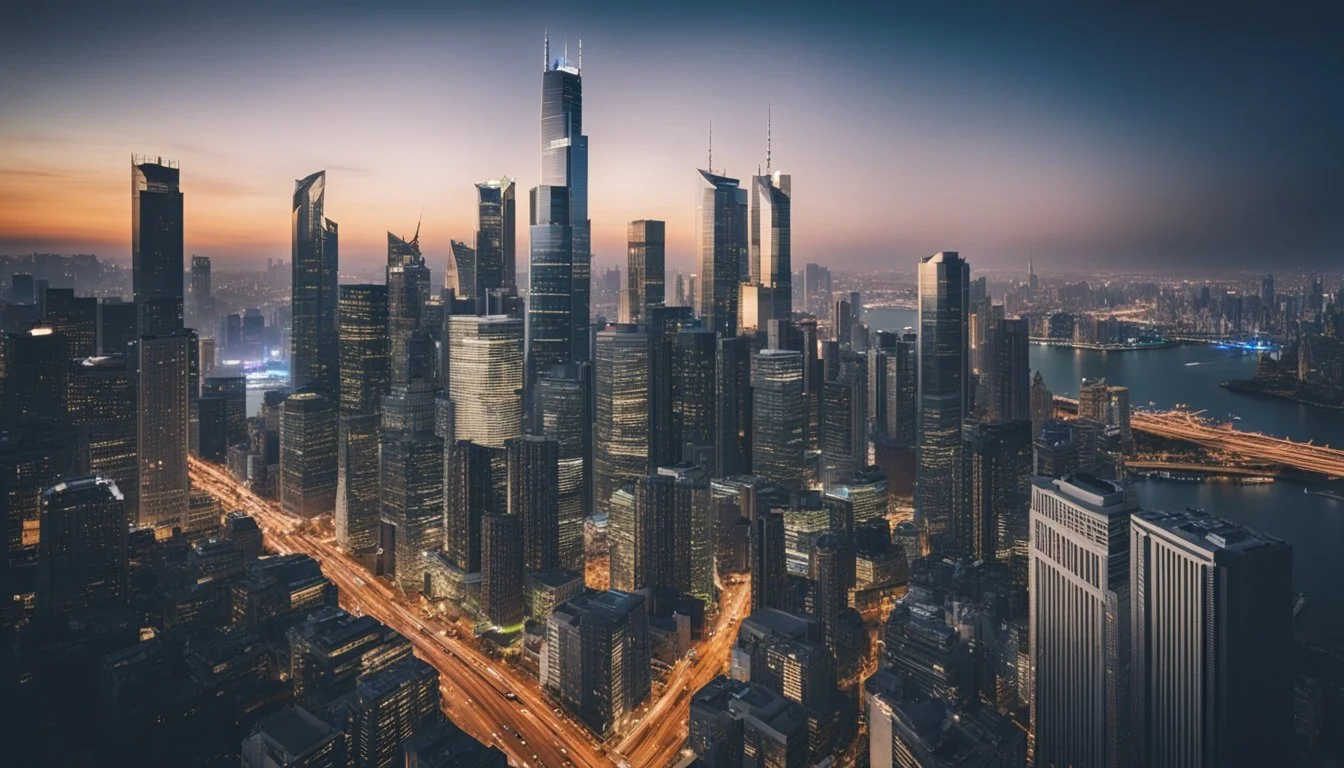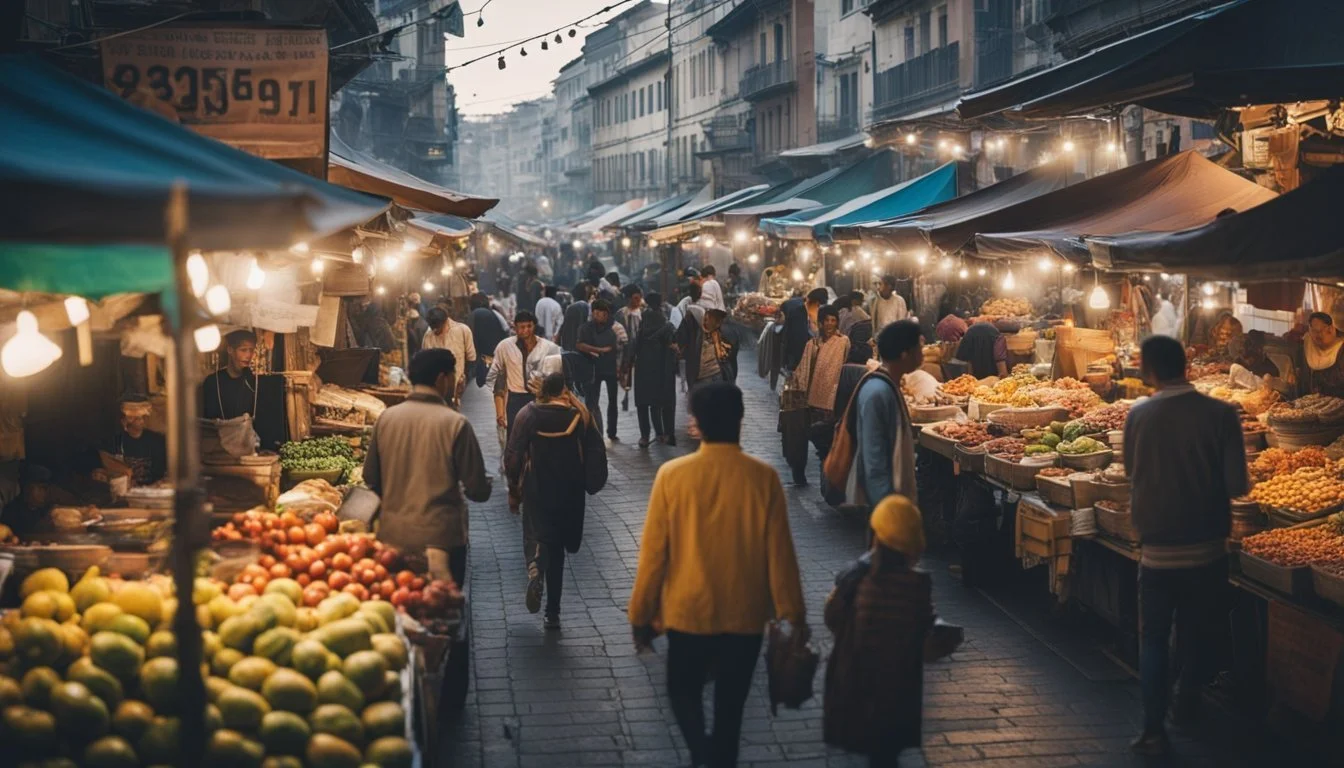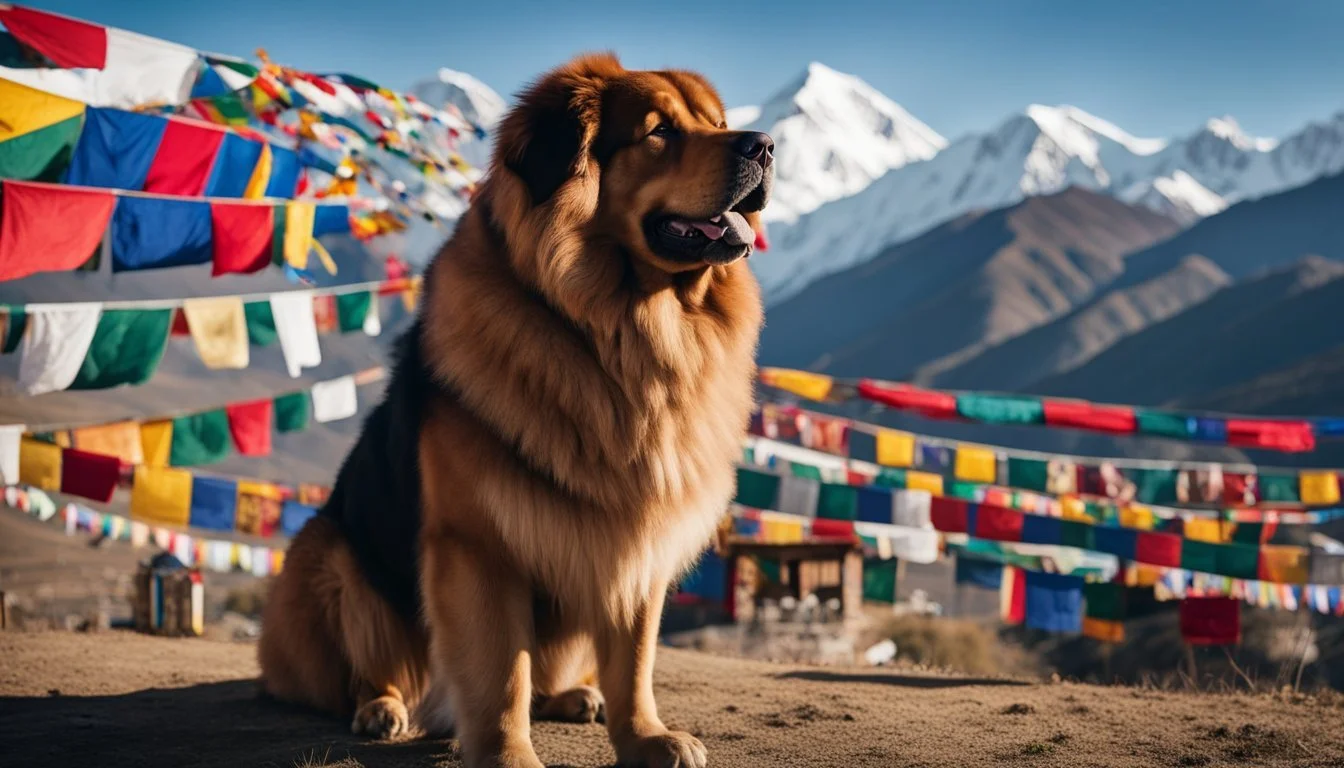20 Documentaries About Cultural Immersion
Unveiling Diverse Traditions and Lifestyles
Cultural immersion through documentaries offers a profound window into the diverse ways of life around the world. These films not only showcase different traditions, languages, and histories but also enable viewers to develop a deeper understanding and appreciation for the unique experiences of various communities.
What makes these documentaries invaluable is their ability to connect audiences with the intricacies of other cultures, fostering empathy and global awareness. By highlighting the rich tapestry of human existence, these documentaries promote a sense of shared humanity and encourage a more inclusive worldview.
1) Baraka (1992)
Baraka is a non-narrative documentary directed by Ron Fricke. The film captures stunning visuals from 24 countries, reflecting the vast diversity of human experience and nature. Known for its exceptional cinematography, Baraka is one of the most visually captivating films of its time.
The film is often compared to Koyaanisqatsi, a film Fricke worked on as a cinematographer. Baraka uses the 70mm Todd-AO format, enhancing its visual splendor and making it one of the last films shot in this format.
Baraka lacks dialogue, allowing the imagery and music to convey its messages. This approach immerses the viewer in various cultures and natural wonders without the filter of language.
Scenes range from religious rituals to bustling cityscapes, capturing the essence of human life and spiritual practices around the world. The film’s global scope and breathtaking visuals provide a powerful experience.
For more information, visit the Wikipedia page on Baraka.
2) Babies (2010)
Babies, directed by Thomas Balmes, offers a visually captivating exploration of early childhood across diverse cultures. The film follows the lives of four infants from different parts of the world: Mongolia, Namibia, San Francisco, and Tokyo.
Each baby develops within unique cultural contexts, showcasing varied environments and parenting practices. The documentary does not include narration, allowing the viewers to observe these early stages of life without commentary.
Balmes captures the universality of infancy, while also highlighting the distinct cultural differences. From scenes of Mongolian rural life to the urban settings of Tokyo, each setting provides a fascinating backdrop to the infants' experiences.
At 79 minutes, the movie succinctly portrays the common milestones of early childhood, such as first steps and playful interactions. "Babies" offers a rare glimpse into the contrasting worlds of newborns in various cultural settings.
For more information, visit Wikipedia.
3) The Salt of the Earth (2014)
"The Salt of the Earth" documents the life and work of renowned Brazilian photographer Sebastião Salgado. Directed by Wim Wenders and Juliano Ribeiro Salgado, this film offers a glimpse into Salgado’s prolific career spanning over four decades.
Salgado has traveled to remote and often troubled regions of the world, capturing humanity in its most raw and resilient forms. His lens has focused on the suffering brought by war, famine, and displacement.
Wenders and Salgado create a visual journey that blends intimate interviews with powerful, striking imagery. The documentary was showcased in the Un Certain Regard section at the 2014 Cannes Film Festival, highlighting its global recognition.
This film serves as a testament to Salgado’s commitment to documenting both the beauty and the brutality of the human condition.
For more information on The Salt of the Earth, visit Wikipedia or IMDb.
4) Samsara (2011)
Samsara is a visually stunning documentary directed by Ron Fricke. Known for his work on the 1992 film Baraka, Fricke again uses 70mm film to capture breathtaking imagery.
The film explores the wonders of our world, showcasing a variety of landscapes, architectures, and cultures. From bustling cities to serene natural landscapes, every frame is meticulously crafted.
Samsara does not follow a traditional narrative. Instead, it presents a series of vivid, interconnected scenes that invite viewers to meditate on the cyclical nature of life. The term "samsara" itself refers to the cycle of death and rebirth in Buddhist philosophy.
A significant portion of the film encourages viewers to engage in reflective thought. In contrast to the frenetic pace of modern life, the documentary provides a tranquil, almost meditative experience.
Filmed over five years in 25 countries, the documentary covers an extensive range of cultural practices and natural wonders. The precise cinematography and powerful score combine to make it a transformative experience.
For more details, visit Samsara on IMDb.
5) Human (2015)
"Human" is a documentary directed by Yann Arthus-Bertrand that delves into the essence of human life through a series of poignant interviews and stunning visual imagery.
The film gathers personal stories and testimonies from over 2,000 individuals across 60 countries, highlighting the common threads of human experience despite diverse backgrounds.
It offers a comprehensive look at the emotions, struggles, and aspirations that define humanity.
Through these intimate conversations, viewers gain a profound perspective on love, happiness, suffering, and the pursuit of meaning.
"Human" is as much a visual feast as it is an emotional journey, featuring breathtaking aerial shots that contextualize human stories within the broader landscape of the world.
For more information, visit IMDb.
6) Jiro Dreams of Sushi (2011)
Jiro Dreams of Sushi is a documentary that offers an in-depth look into the life and work of Jiro Ono, an esteemed sushi chef in Tokyo.
At the time of filming, Jiro Ono was 85 years old and operated Sukiyabashi Jiro, a highly respected sushi restaurant with only 10 seats, located in a Tokyo subway station.
The film delves into Jiro's relentless pursuit of culinary excellence. Known for his precision and discipline, Jiro's dedication to perfecting the art of sushi-making is evident in every piece he crafts.
The documentary provides a window into Japanese culture and traditions through the lens of sushi. It also highlights the influence Jiro has had on global culinary arts, inspiring chefs worldwide to strive for perfection.
For those interested in the intricacies of sushi-making and the cultural significance of Japanese cuisine, this documentary is a must-watch.
More information on the film can be found here.
7) Anthropocene: The Human Epoch (2018)
"Anthropocene: The Human Epoch" is a documentary that examines the profound effect humans have had on the planet. Directed by Jennifer Baichwal, Edward Burtynsky, and Nicholas de Pencier, this film is part of a trilogy that also includes "Manufactured Landscapes" (2006) and "Watermark" (2013).
The documentary features stunning visuals and travels across six continents, documenting the extensive reengineering of Earth by humans. It provides a stark look at changes such as large-scale mining, urban development, and dwindling natural resources.
The film is a result of four years of dedicated work and offers a cinematic meditation on humanity's impact. Notably, filmmaker Edward Burtynsky is known for his compelling depiction of industrial impacts on landscapes, offering an insightful and often unsettling look at environmental degradation.
For those interested in the intersection of culture and environmental science, this film provides a thought-provoking experience. The documentary has been recognized for its critical perspective and compelling visual storytelling.
8) Happy People: A Year in the Taiga (2010)
"Happy People: A Year in the Taiga" is a documentary directed by Werner Herzog and Dmitry Vasyukov. The film captures the lives of the residents in Bakhta, an isolated village in the Siberian Taiga. Approximately 300 people reside in this remote settlement at the confluence of the Yenisei and Bakhta Rivers.
The documentary portrays the daily routines and traditional practices of these villagers, focusing on their self-sufficient lifestyles. The narrative is enriched by English narration written and voiced by Herzog, making the ethnographic content accessible to a global audience.
Herzog's film is visually stunning, reflecting the harsh and beautiful landscapes of the Siberian wilderness. The trappers of Bakhta adapt to the extreme environment, living in ways that have changed little over the past century.
"Happy People" presents an intimate view into a community untouched by modernity, offering insights into human resilience and connection to nature. This portrayal of cultural immersion helps viewers appreciate the diverse ways of life that exist around the world.
More about Happy People: A Year in the Taiga on IMDb
9) The Cave of the Yellow Dog (2005)
The Cave of the Yellow Dog, directed by Byambasuren Davaa, offers an insightful look into the life of a nomadic family in Mongolia. This 2005 film blends documentary and drama, focusing on the delicate balance between traditional customs and the encroaching modern world.
At its core, the film tells the story of a young girl named Nansal who finds a stray dog in the vast Mongolian steppes. Despite her parents' initial disapproval, she forms a deep bond with the dog, which becomes a symbol of loyalty and connection.
Davaa's use of naturalistic storytelling sheds light on the daily routines and cultural practices of the nomadic Mongolians. Viewers gain a glimpse into their sheep-herding lifestyle, folklore, and religious beliefs.
The cinematography captures the serene beauty and harsh realities of the Mongolian landscape. The juxtaposition of traditional life against modern influences provides a poignant commentary on cultural preservation.
For more information on The Cave of the Yellow Dog, visit IMDb.
10) Life in a Day (2020)
"Life in a Day" is a groundbreaking documentary directed by Academy Award winner Kevin Macdonald.
Produced by Ridley Scott, it employs a unique crowd-sourced approach where people globally filmed their everyday lives on July 25, 2020.
The film offers a vivid snapshot of various cultures and experiences, capturing life's diversity on a single day.
It premiered at the Sundance Film Festival in early 2021 and was subsequently released on YouTube.
The clips in the documentary display mundane and extraordinary moments, blending together to create a powerful narrative about humanity.
11) Encounters at the End of the World (2007)
Werner Herzog's "Encounters at the End of the World" takes viewers on a journey to the frigid expanse of Antarctica. This documentary highlights the human and natural elements of this remote continent. Through Herzog’s lens, the audience gains insight into the lives of scientists and other individuals who reside there, each with their unique stories and experiences.
The film showcases the stark and haunting beauty of the Antarctic landscape. Herzog and his cinematographer, Peter Zeitlinger, masterfully capture the icy terrain and the wildlife that inhabit it. One memorable scene involves the Weddell seal and offers a glimpse into its feed cycle, overseen by zoologist Olav Oftedal.
Herzog's exploration of Antarctica goes beyond the physical environment. He delves into the motivations and philosophies of the people who choose to live in such an extreme and isolated location. From geologists to biologists, the film presents a diverse group of individuals, each contributing to the kaleidoscope of life at the world's end.
Released in 2007, "Encounters at the End of the World" received critical acclaim and was nominated for Best Documentary Feature at the 81st Academy Awards. It provides an unparalleled look at the intersection of human curiosity and the planet's most remote environment.
Learn more about "Encounters at the End of the World" on Wikipedia.
12) Man on Wire (2008)
"Man on Wire" is a riveting documentary that chronicles the daring high-wire walk by Philippe Petit between the Twin Towers of the World Trade Center in 1974.
Directed by James Marsh, this film captures the meticulous planning and sheer audacity behind Petit's illegal but awe-inspiring feat.
Petit's journey began in his youth with an interest in magic tricks, later expanding to street performances. His famous act turned him into a media sensation.
The film also highlights the risks involved. Petit's team faced potential charges of trespassing and manslaughter, but ultimately, Petit was arrested for disturbing the peace.
The documentary is based on his 2002 book, "To Reach the Clouds," and won several awards, including the Audience Award at Sundance Film Festival in 2008.
For more information, you can visit IMDb or Wikipedia.
13) Waste Land (2010)
"Waste Land" captures the journey of Brazilian artist Vik Muniz as he returns to his homeland to create portraits using materials found in Brazil's largest landfill, Jardim Gramacho.
This documentary delves into the lives of the catadores, or pickers of recyclable materials, who work at the landfill.
Filmed over three years, the documentary showcases Muniz's effort to transform garbage into art, bringing dignity and visibility to the catadores. The film highlights the intersection between art and social issues and underscores the value of human agency and creativity.
The film is directed by Lucy Walker, with Karen Harley and João Jardim co-directing. It not only portrays stunning works of art but also explores the personal stories of the catadores, shedding light on their resilience and community spirit.
Given its emotional depth and artistic vision, "Waste Land" has received considerable acclaim in the documentary circuit for its unique approach to showing how art can engender social change.
For more information on "Waste Land," visit its Wikipedia page.
14) Rivers and Tides (2001)
Directed by Thomas Riedelsheimer, Rivers and Tides (2001) captures the artistic process of British sculptor Andy Goldsworthy. Known for using materials such as leaves, ice, and stones, Goldsworthy's creations are both intricate and ephemeral.
The documentary’s meditative approach lets viewers experience Goldsworthy’s philosophy. His art often interacts with natural elements, emphasizing the transient nature of human creativity.
The film's visual journey takes viewers to beaches, rivers, forests, and open fields, showcasing how Goldsworthy’s works evolve and eventually dissolve. This reflects his fascination with time and the inevitable decay of all things.
For more details about Rivers and Tides, visit IMDb.
15) The Last Train Home (2009)
"The Last Train Home" is a documentary directed by Lixin Fan. It chronicles the journey of Zhang Changhua and Chen Suqin, a couple who leave their factory jobs to return to their rural village for Chinese New Year.
This film offers a rare glimpse into the lives of China's 130 million migrant workers. It highlights their struggles and the emotional toll of leaving family behind for economic opportunities.
The documentary utilizes a verité style, capturing raw and genuine moments. It sheds light on the massive human migration happening every spring in China.
"The Last Train Home" has gained critical acclaim and won the Best Documentary Feature at the International Documentary Film Festival Amsterdam in 2009.
For more details, visit Wikipedia.
16) The Act of Killing (2012)
"The Act of Killing," directed by Joshua Oppenheimer, Christine Cynn, and an anonymous collaborator, offers a haunting exploration of the Indonesian mass killings of 1965-66.
The documentary stands out due to its unique approach, asking former death squad members to reenact their crimes. This method provides disturbing insights into their psyche and the events.
One of the film's central figures, Anwar Congo, and his associates portray their actions in stylized film genres, further deepening the moral complexities. This reenactment sheds light on their justified narratives and reveals unsettling truths.
The film has sparked extensive discussion about ethics, historical memory, and the power dynamics involved in storytelling. This engagement underscores its role in promoting civic dialogue and reflection on past atrocities.
For further information, visit IMDb or Wikipedia.
17) Faces Places (2017)
"Faces Places," directed by Agnès Varda and JR, explores the cultural landscape of rural France. The film captures their journey through small towns, where they engage with locals and create large-scale photographic murals.
The documentary highlights the lives and stories of ordinary people, turning them into subjects of public art. This unique collaboration between an iconic filmmaker and a street artist brings an artistic perspective to everyday life.
Agnès Varda, a pioneer of the French New Wave, and JR, known for his public art projects, share a remarkable chemistry. Their interactions with the villagers and the creation of the murals reveal the beauty and significance of local histories and cultures.
With its heartfelt storytelling and visually striking art, "Faces Places" offers a deeply human experience. The collaboration underscores how art can bring people together and honor their shared humanity.
18) Tibetan Dog (2011)
Tibetan Dog, an animated film released in 2011, offers a unique cultural experience through its portrayal of Tibetan life. The story follows a young boy, Tenzin, who journeys from urban China to the Tibetan grasslands after his mother's passing.
In Tibet, Tenzin meets a magnificent Tibetan Mastiff, forging an emotional bond that echoes Tibet’s rich cultural heritage and the deep connections between humans and animals in Tibetan society.
The film combines picturesque settings and local traditions with animated storytelling, presenting an engagement with Tibetan culture through the medium of film.
19) Children of Heaven (1997)
"Children of Heaven," directed by Majid Majidi, is an Iranian film that offers a touching glimpse into the lives of siblings Ali and Zahra.
The movie follows the duo as they navigate their daily struggles in Tehran after losing a pair of shoes.
Its simple yet profound narrative underscores the resilience and resourcefulness inherent in childhood.
This film is celebrated for its emotive storytelling and its ability to humanize the people of Iran. It serves as a valuable resource in understanding familial bonds and the trials faced by children in less privileged circumstances.
"Children of Heaven" garnered international acclaim, including a nomination for the Academy Award for Best Foreign Language Film.
It is rated PG and deemed suitable for children aged 10 and above by Common Sense Media.
Viewers can appreciate its universal themes of love, perseverance, and the innocence of childhood.
For more information about "Children of Heaven," visit IMDb.
20) The Eagle Huntress (2016)
"The Eagle Huntress" is a Kazakh-language documentary directed by Otto Bell. It narrates the journey of Aisholpan Nurgaiv, a 13-year-old girl from Mongolia, aiming to become the first female eagle hunter to compete in the annual eagle festival at Ulgii, Mongolia.
Aisholpan comes from a family with a deep-rooted tradition of eagle hunting, passed down over twelve generations. She breaks gender barriers by pursuing a role traditionally reserved for men. Her determination and resilience serve as central themes of this documentary.
Set against the stunning backdrop of the Mongolian steppe, the film showcases the breathtaking landscapes and the rich cultural heritage of eagle hunting. It captures Aisholpan's rigorous training, her close bond with her golden eagle, and the challenges she faces from societal norms.
Narrated by Daisy Ridley, "The Eagle Huntress" emphasizes the power of belief and perseverance. Otto Bell's direction, combined with Simon Niblett's cinematography, provides a visual treat that enhances the inspirational story of Aisholpan.
This documentary is a remarkable celebration of female empowerment and cultural immersion, offering viewers an intimate look into a centuries-old tradition through the eyes of a young trailblazer.
For more information, visit Wikipedia.
Understanding Cultural Immersion
Cultural immersion offers profound insights into different societies, enhancing personal growth and cross-cultural understanding. Its significance and benefits are multifaceted, impacting language skills, empathy, and global awareness.
Definition and Importance
Cultural immersion is the process of engaging deeply with another culture by participating in its daily life and practices. It moves beyond mere observation to active involvement, fostering genuine connections with local communities.
This immersion is essential for developing a nuanced understanding of cultural norms, values, and perspectives. It allows individuals to experience diverse lifestyles firsthand, making it a vital tool for anyone looking to appreciate the complexities of global cultures. Travel, homestays, and language courses are common methods for achieving cultural immersion.
Benefits of Cultural Immersion
Engaging in cultural immersion brings numerous benefits. First, it enhances language skills. Daily interactions with native speakers improve fluency and pronunciation, leading to a more authentic accent. This immersion also fosters empathy and open-mindedness, as experiencing another culture's way of life promotes understanding and acceptance.
Additionally, cultural immersion contributes to personal growth. It challenges individuals to step out of their comfort zones and adapt to new environments. This adaptability is crucial for developing resilience and problem-solving abilities. Overall, these experiences can also lead to lifelong friendships, broadening one's social network globally.
Elements of Effective Cultural Immersion
Effective cultural immersion involves authentic interactions with local people and actively learning about local customs and traditions. These elements foster a deeper, more accurate understanding of a new culture.
Authentic Interactions
Authentic interactions with native speakers and residents are crucial. These engagements go beyond superficial conversations, focusing on meaningful exchanges that reveal underlying cultural beliefs and behaviors. Participating in local events, such as festivals or community gatherings, provides firsthand experiences that can't be replicated in a classroom setting.
Engaging in these interactions helps in developing a natural-sounding accent and fluency. Daily conversations, whether in social settings or through radio and television, enhance language skills while offering deeper insights into cultural contexts.
Volunteering or working locally can further enrich these interactions, offering a more nuanced view of the culture. Establishing relationships with locals leads to a more authentic and immersive experience compared to being a mere observer.
Learning Local Customs and Traditions
Learning the customs and traditions of a place is essential for effective cultural immersion. Customs often include unique social norms, rituals, and manners that define daily life and interpersonal interactions. Respecting and participating in these traditions shows a genuine commitment to understanding the culture.
Food, festivals, and daily practices offer rich insights into the heart of a culture. Trying local cuisine, understanding its significance, and partaking in traditional celebrations provide practical experiences that enhance cultural empathy and appreciation.
Mastering these local customs fosters better integration and reduces potential cultural barriers. It allows individuals to navigate their new environment more easily, promoting a smoother and more rewarding cultural immersion experience.










